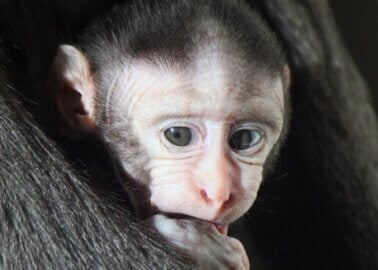How Awards to Young Scientists Help End Experiments on Animals
This week, the PETA International Science Consortium Ltd. announced that Patrícia Zoio, a PhD student from the NOVA University of Lisbon, has won its Early-Career Scientist Award to attend a training course on non-animal test methods. Patrícia is developing a skin-on-a-chip model that could replace the use of animals in long-term skin tests.

The European Commission’s Joint Research Centre Summer School, taking place in Ispra, Italy, from 21 to 24 May, will allow participants to explore some of the most recent advancements in the field of non-animal tests. Patrícia will attend lectures and interactive sessions and visit a laboratory dedicated to developing alternatives to animal tests.
What Are Organs-on-Chips?
Here’s a quick introduction to the technology:
Why Are These Awards So Important?
Millions of rabbits, mice, guinea pigs, and other animals are locked inside laboratories, facing horrifying procedures that can leave them in severe pain and cause them psychological distress. PETA is working to end these cruel and often misleading experiments on animals. This award will help replace the use of animals in toxicity tests for chemicals.
The Consortium has also presented several other Early-Career Scientist Awards, which have covered expenses to attend conferences and workshops such as the Institute for In Vitro Sciences Practical Methods for In Vitro Toxicology Workshop and the 20th International Congress on In Vitro Toxicology.
These awards are vital to ensuring that the next generation of toxicologists is equipped with the knowledge and skills needed to implement modern, animal-free tests, which are crucial for a future free from experiments on animals.
Human Tissue Models Also Help Rabbits and Rats
The Consortium has also provided researchers with technology free of charge. For example, partnering with biotech company Epithelix, it supplied researchers with three-dimensional human tissue models of the respiratory tract that can be used to test cosmetics, pharmaceuticals, industrial chemicals, pesticides, and household products without using animals.
It also teamed up with MatTek Corporation to distribute free three-dimensional human tissue models that can replace the use of rabbits in tests in which chemicals are applied directly to their eyes and the use of rats in deadly inhalation tests in which they’re squeezed into narrow tubes and forced to inhale toxic substances. In addition to these three-dimensional tissues, hundreds of thousands of pounds’ worth of testing equipment from VITROCELL – devices that can be used to expose cells to chemicals instead of using animals – has also been given out.
Overall, the Consortium and its members have donated millions of pounds towards improving and implementing non-animal test methods, including funding their development and validation and organising free workshops, webinars, and training opportunities for scientists.
What You Can Do for Animals in Laboratories
As millions of animals are still locked inside laboratories, please take action for them. Fire off e-mails and add your name to PETA’s crucial petitions and open letters to help end all experiments on animals:



